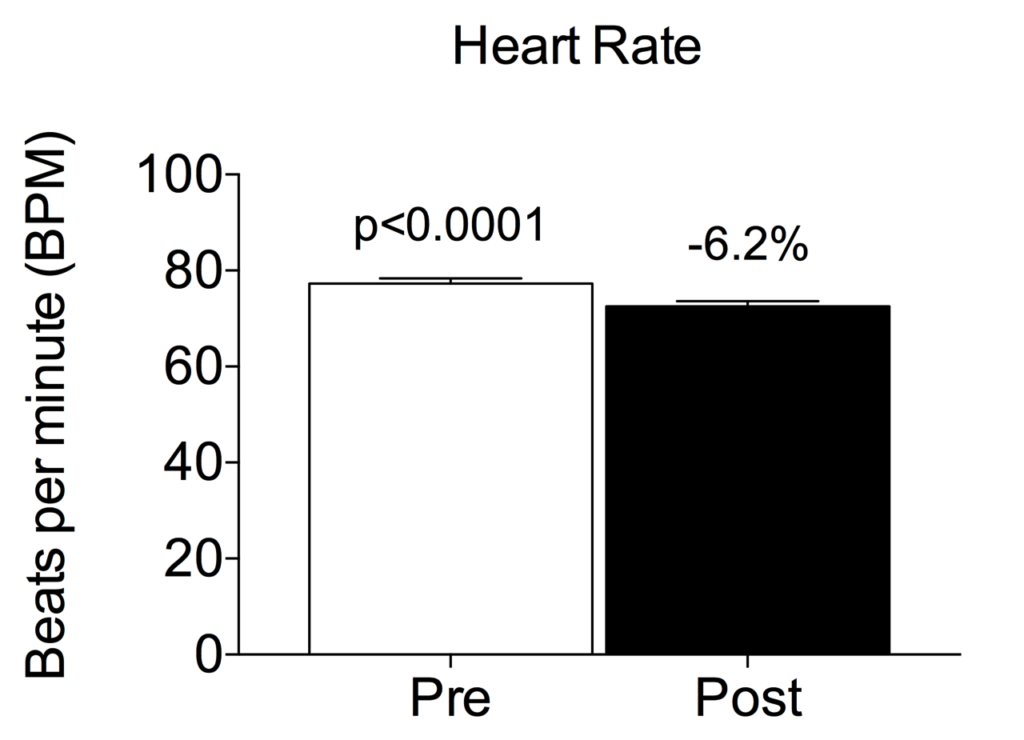Effect of a single Audio-Visual Brain Entrainment session on Heart Rate Variability: a clinical trial with 100 adult volunteers
Presented at the 2020 International Congress on Integrative Medicine and Health. Published at Global Advances in Health and Medicine Volume 9, 2020. DOI: 10.1177/2164956120912849.
Title: Effect of a single Audio-Visual Brain Entrainment session on Heart Rate Variability: a clinical trial with 100 adult volunteers
Authors: Michael Porter1, Patrick Porter1,2, Afonso Inoue Shiguemi Salgado1 and Francisco J Cidral-Filho1
Affiliation:
1Integrative Physical Therapy Residency – Salgado Institute of Integrative Health, Londrina, PR – Brazil.
2Quantum University, Honolulu, HI – USA.
Objective: The objective of this study was to investigate the effect of the Audio-Visual Brain Entrainment (ABE) on Heart Rate Variability.
Methods: Sample size consisted of 100 adult volunteers (50 males and 50 females) with no hearing disabilities. ABE was delivered with a BrainTap headset (New Bern – NC – USA) in a 20-minute session. Session consists of Binaural beats at 18 to 0.5 HZ, Isochronic Tones at 18 to .0.5 HZ and visual Entrainment through light-emitting diode lights at 470 nanometers (nm) flickering at 18 to 0.5 HZ. Heart rate Variability (Dinamika HRV – Advanced Heart Rate Variability Test System, Moscow, Russia) was assessed at baseline and after ABE session.
Results: ABE significantly (1) increased Heart Rate Variability: HRV Index (A low HRV is associated with an increased risk of cardiovascular disease – p<0.001, 21.8%) and RRNN (RR normal-to-normal intervals; a marker of overall HRV activity – p<0.001, 6.8%); (2) increased Parasympathetic activity markers: RMSSD (Root Mean Square of the Successive RR interval Differences – p<0.0001, 32.2%), NN50 (The number of pairs of successive NN (R-R) intervals that differ by more than 50 ms – p<0.0001, 50.6%), pNN50% (The proportion of NN50 divided by the total number of NN (R-R) intervals – p<0.001, 51.6%), HFnu (High Frequency Band: index of modulation of the parasympathetic branch of the autonomic nervous system – p<0.0336, 37.1%), and LFnu: (Low Frequency Band: general indicator of aggregate modulation of both the sympathetic and parasympathetic branches of the Autonomic Nervous System – p<0.0048, 45.1%); and (3) decreased Stress Index (p<0.001, 38.4%) and Heart Rate (p<0.0001, 6.2%).
Conclusion: A single Audio-Visual Brain Entrainment session with the BrainTap Headset significantly increased heart rate variability and parasympathetic activity, as well as decreased stress index and heart rate.
Graphs
Increased Heart Rate Variability:
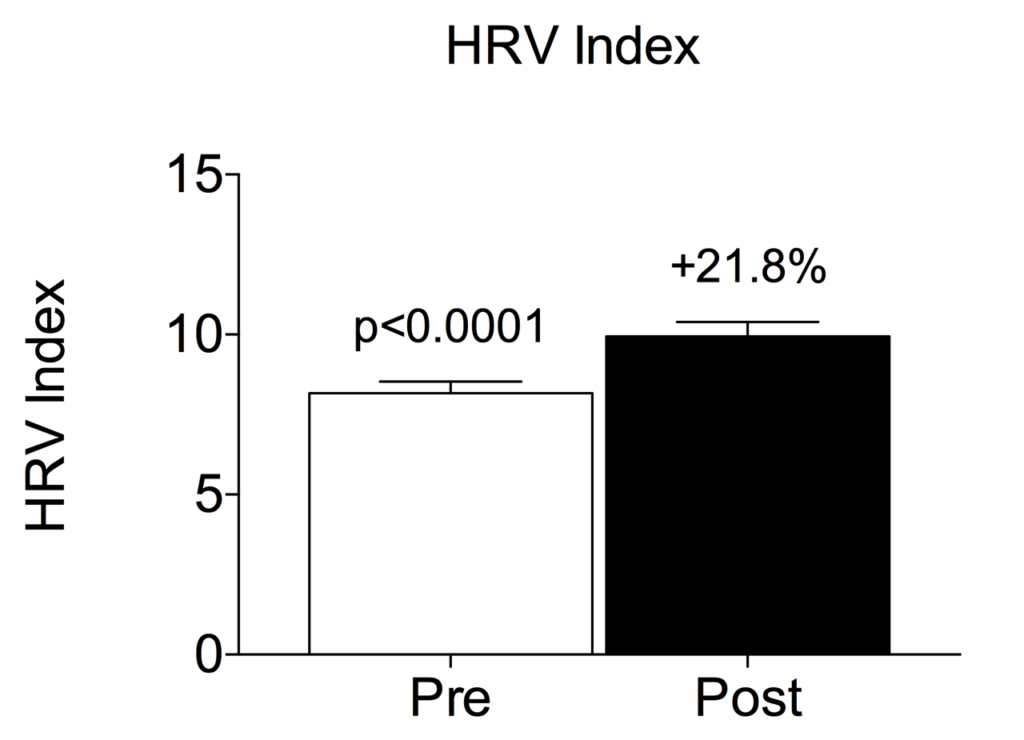
- HRV Index (A low HRV is associated with an increased risk of cardiovascular disease)
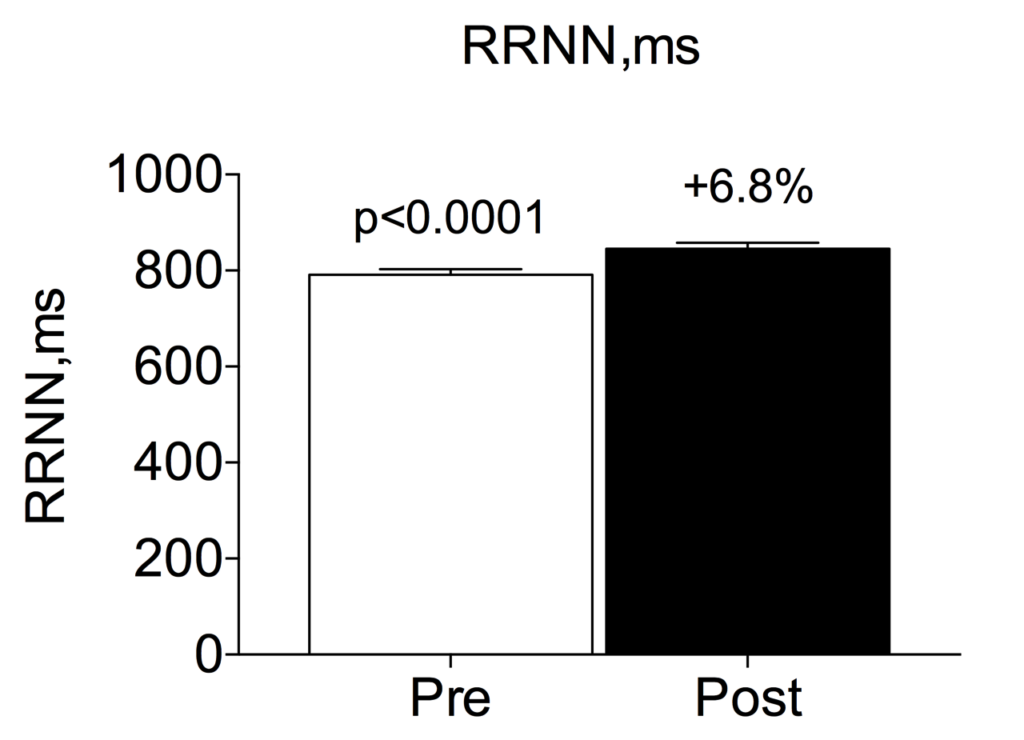
- RRNN (RR normal-to-normal intervals; a marker of overall HRV activity)
Increased Parasympathetic activity markers:
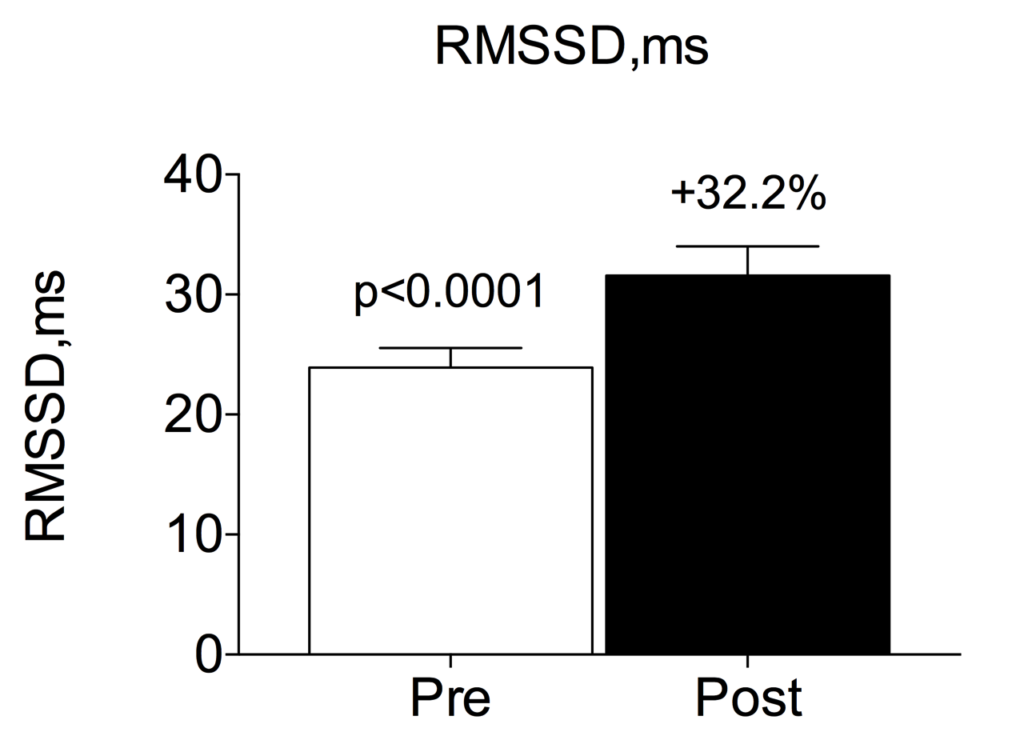
- RMSSD (Root Mean Square of the Successive RR interval Differences; a marker of Parasympathetic activity)
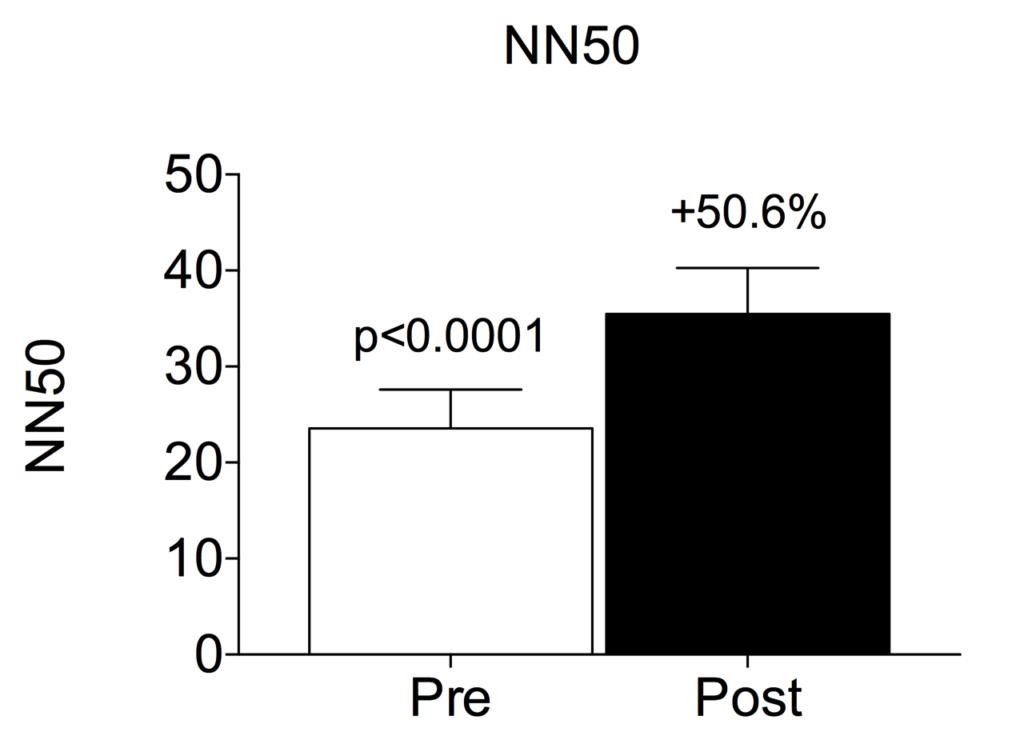
- NN50 (The number of pairs of successive NN (R-R) intervals that differ by more than 50 ms; a marker of Parasympathetic activity)
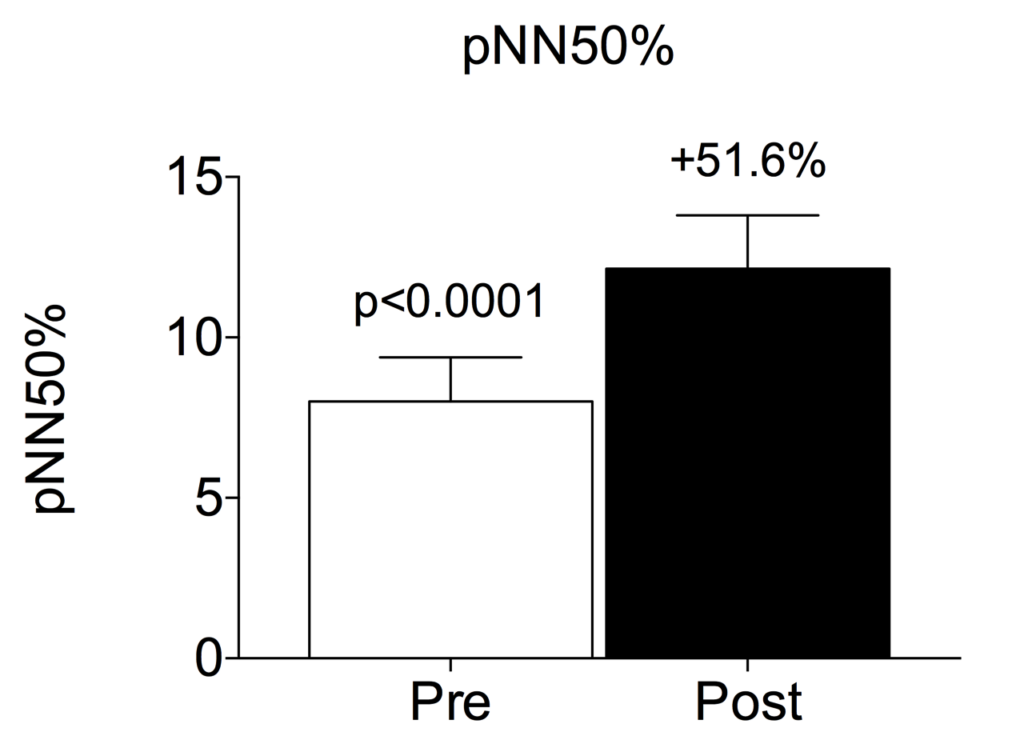
- pNN50% (The proportion of NN50 divided by the total number of NN (R-R) intervals; a marker of Parasympathetic activity)
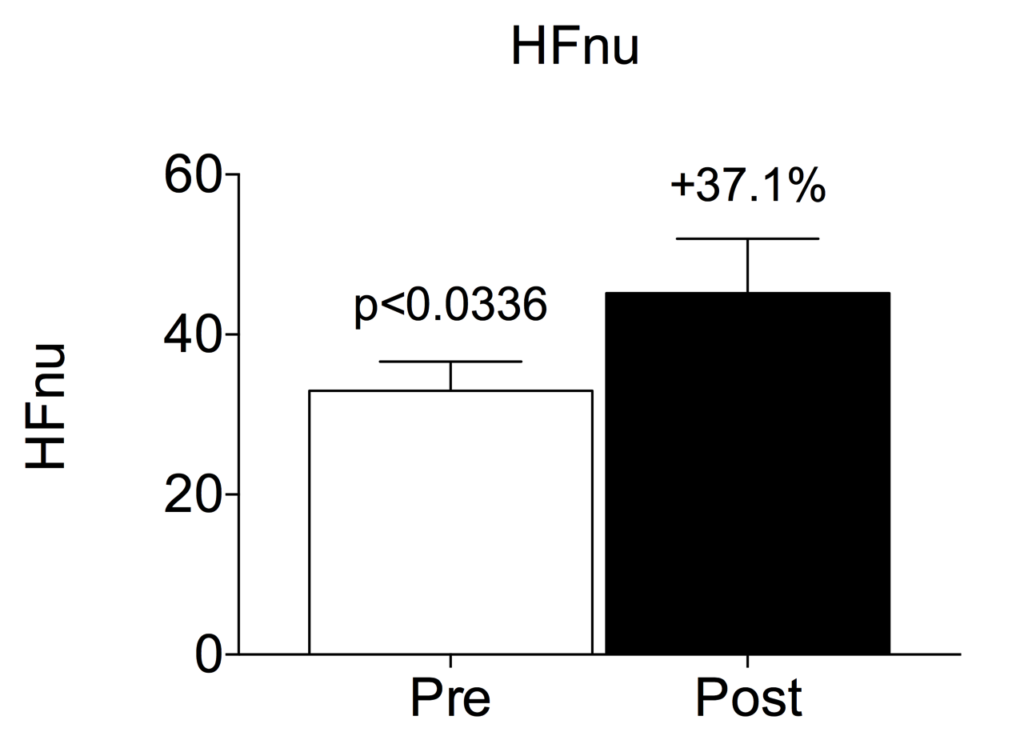
- HFnu (High Frequency Band: index of modulation of the parasympathetic branch of the autonomic nervous system)

- LFnu: (Low Frequency Band: general indicator of aggregate modulation of both the sympathetic and parasympathetic branches of the Autonomic Nervous System)
Decreased Stress Index
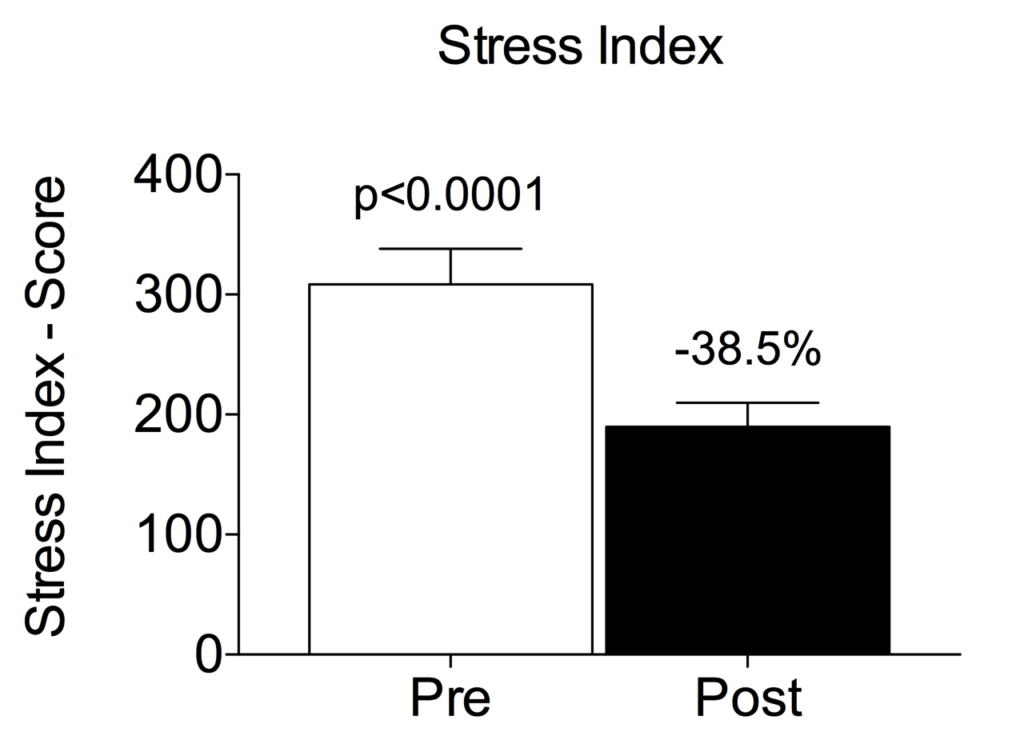
Decreased Heart Rate
